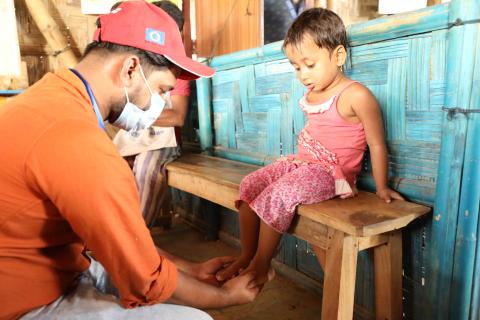World Health Organization: Preventing and managing wasting and nutritional oedema in children under five years
This is a summary of the following guideline: WHO (2023) WHO guideline on the prevention and management of wasting and nutritional oedema (acute malnutrition) in infants and children under 5 years. https://www.childwasting.org/normative-guidance
The World Health Organization (WHO) recently updated its guidelines on the management of acute malnutrition, building on and revising the previously published 2013 guidelines. The updated guidelines are divided into four sections: the management of infants under six months of age at risk of poor growth and development; the management of infants and children aged 6–59 months with wasting and/or nutritional oedema; post-exit interventions after recovery from wasting and/or nutritional oedema; and the prevention of wasting and/or nutritional oedema (with the later section on prevention to be published later in 2023).
The expanded scope of this guideline addresses some areas that were neglected in previous WHO guideline processes, including support to vulnerable infants, wherein the guidelines include regular health check-ups for infants before they reach the age of six months to ensure that the needs of those infants who are not growing well are met before they meet the criteria for wasting and/or nutritional oedema as well as providing recommendations for moderately wasted children through both dietary and clinical approaches. This change means that health systems will have new tools to support children who fall into the category of ‘high-risk moderate wasting.’ The updated guideline also provides guidance on psychosocial elements of care for infants at risk of poor growth and development and infants and children with wasting and/or nutritional oedema, as well as their mothers/caregivers.
This new 2023 guideline includes 19 recommendations (12 new and seven updated) and 10 good practice statements. Guiding principles that were given strong consideration within all recommendations and good practice statements included: a) Taking a child health approach (i.e. putting the child’s health, growth, and development at the forefront); b) Caring for the mother/caregiver–infant pair (recognising the health and wellbeing of one is intimately linked to the other’s); c) Focusing on multisectoral action, with the health system placed at the centre of interventions; d) Prioritising nutritious home foods to prevent wasting, manage moderate wasting, and support recovery from severe wasting; e) Recognising gender norms and power structures and focusing on enhancing gender equity; and f) Ensuring that implementation of recommendations is informed by local contexts.
As a next step within the guideline process, UNICEF and WHO have established a Technical Advisory Group. This group aims to assist in the implementation of the guidelines and to support national governments in adapting their national guidelines accordingly.
The key messages within the 2023 guideline can be found in Box 1.
Box 1: Key messages from the management section of the guideline
|


